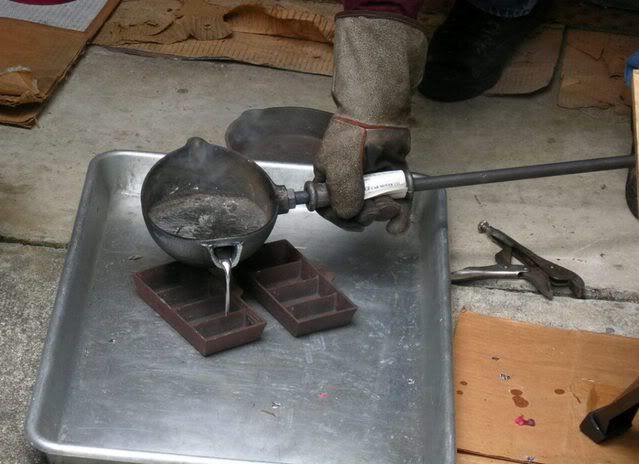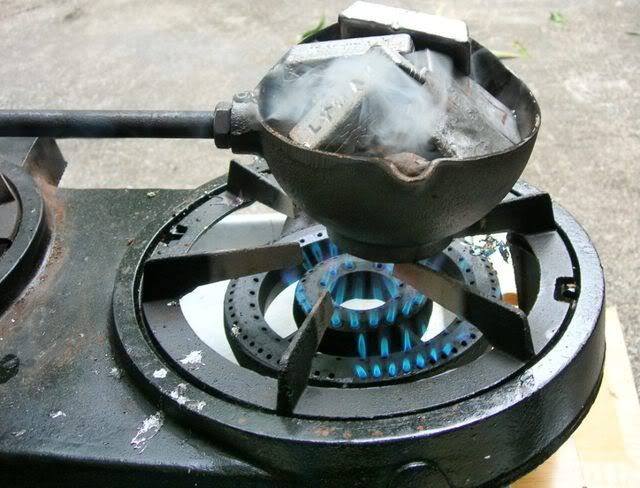This may have the potential to be an extraordinarily stupid question, but I'm going to ask it anyway.
I've been smelting wheelweights with my bottom-pour pot for quite a while, but I finally got fed up with the valve getting clogged and messing up my bullet casting, so I bought a Lyman Big Dipper over the weekend. It works great. Except for this one problem: I can only scoop so much lead out of the pot with a dipper. How do you guys make the ingots after you melt down your wheel weights? Do you just pick up the pot and pour? Do you have some kind of secret spoon that I don't know about?
I've been smelting wheelweights with my bottom-pour pot for quite a while, but I finally got fed up with the valve getting clogged and messing up my bullet casting, so I bought a Lyman Big Dipper over the weekend. It works great. Except for this one problem: I can only scoop so much lead out of the pot with a dipper. How do you guys make the ingots after you melt down your wheel weights? Do you just pick up the pot and pour? Do you have some kind of secret spoon that I don't know about?


